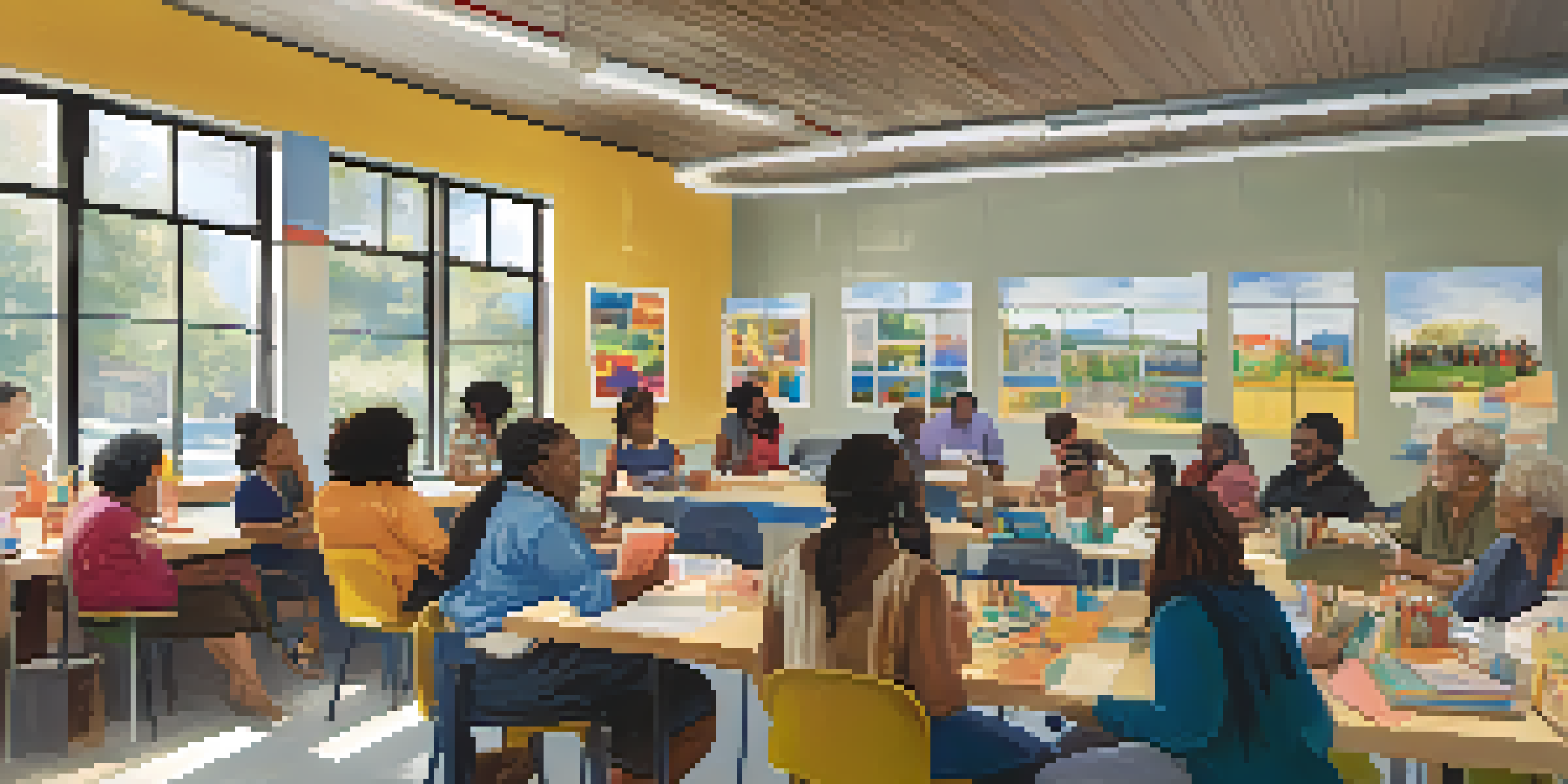Creating Educational Resources for Community Awareness

Understanding the Importance of Community Awareness Resources
Educational resources play a crucial role in raising community awareness. They help inform residents about important issues, from health to environmental concerns. When people are well-informed, they can make better decisions that positively impact their lives and the community as a whole.
An informed community is a powerful community.
By creating tailored educational materials, organizations can address specific needs within the community. This targeted approach ensures that the information is relevant and resonates with the audience. For instance, a resource on local health services can empower residents to seek necessary care.
Ultimately, fostering awareness leads to a more engaged and informed community. When individuals understand the challenges they face, they are more likely to participate in solutions, creating a ripple effect of positive change.
Identifying Key Topics for Educational Resources
Selecting the right topics is essential for effective educational resources. Consider conducting surveys or focus groups to understand what issues matter most to your community. This input can guide the development process and ensure that the resources address real concerns.

Common areas of interest might include public health, environmental sustainability, or local government initiatives. By focusing on these topics, you can help residents navigate complex issues and encourage them to take action. For example, a guide on recycling can educate the community on sustainable practices.
Community Awareness Boosts Engagement
Educational resources empower residents to make informed decisions, leading to a more engaged community.
Additionally, staying updated on emerging issues can help you adapt your resources over time. As community needs evolve, so should your educational materials, ensuring they remain relevant and impactful.
Engaging Stakeholders in the Development Process
Involving local stakeholders can enhance the quality and reach of your educational resources. Collaborating with schools, nonprofits, and community leaders can provide valuable insights and expertise. These partnerships can also help amplify your message, reaching a broader audience.
Education is the most powerful weapon which you can use to change the world.
Consider hosting workshops or brainstorming sessions to gather input from diverse perspectives. This collaborative effort can foster a sense of ownership among stakeholders, encouraging them to promote the resources within their networks. For instance, educators can help distribute materials in schools.
Moreover, engaging stakeholders creates a supportive community around the initiative. When people feel included in the process, they are more likely to champion the cause and ensure its success.
Creating Accessible and User-Friendly Resources
Accessibility is a key factor in the effectiveness of educational resources. Ensure that materials are easy to read and understand, using clear language and visuals. This approach caters to various literacy levels and learning styles, making the information more inclusive.
Digital resources should be optimized for mobile devices, as many community members access information on their phones. Consider creating infographics, videos, or interactive content that can engage users more effectively. For example, a short video on local health services can quickly convey important information.
Stakeholder Involvement Enhances Impact
Collaborating with local stakeholders enriches educational resources and broadens their reach.
Additionally, providing resources in multiple languages can further enhance accessibility. By considering the diverse backgrounds within your community, you can ensure that all residents have the opportunity to benefit from your educational efforts.
Utilizing Various Formats for Educational Resources
Different formats can cater to diverse learning preferences, enhancing the reach of your educational resources. Consider creating brochures, posters, online articles, and videos to present information in various ways. By mixing formats, you can engage different audience segments more effectively.
For instance, a printed brochure might be useful for older community members, while a social media campaign can target younger audiences. Each format has its strengths, allowing you to convey your message through multiple channels. This approach increases the likelihood that your resources will be noticed and utilized.
Moreover, utilizing various formats can help reinforce key messages. When people encounter the same information through different mediums, it can enhance retention and understanding.
Promoting Your Educational Resources Effectively
Once your educational resources are ready, it's crucial to promote them effectively. Utilize social media platforms, community newsletters, and local events to spread the word. Engaging with the community through these channels can help raise awareness about the resources available.
Consider collaborating with local influencers or community leaders to amplify your message. Their endorsement can lend credibility to your resources and encourage more people to engage with them. For example, a local health expert sharing your health resource can significantly increase its reach.
Diverse Formats Improve Accessibility
Utilizing various formats caters to different learning preferences, making information more accessible to all.
Additionally, measuring the impact of your promotional efforts can help refine your strategies over time. Collect feedback and data to understand what works best, allowing you to adjust your approach for future initiatives.
Evaluating the Impact of Educational Resources
Evaluation is a critical step in understanding the effectiveness of your educational resources. Establish clear metrics for success, such as engagement rates, feedback, and behavioral changes within the community. By analyzing these metrics, you can gain insights into what resonates with your audience.
Consider conducting surveys or interviews to gather qualitative feedback from users. This input can highlight areas for improvement and help you understand how the resources are being utilized. For example, feedback might reveal that a particular format is more effective than others.

Regular evaluation allows you to adapt your resources based on community needs and preferences. By staying responsive, you can ensure that your educational initiatives continue to have a meaningful impact.